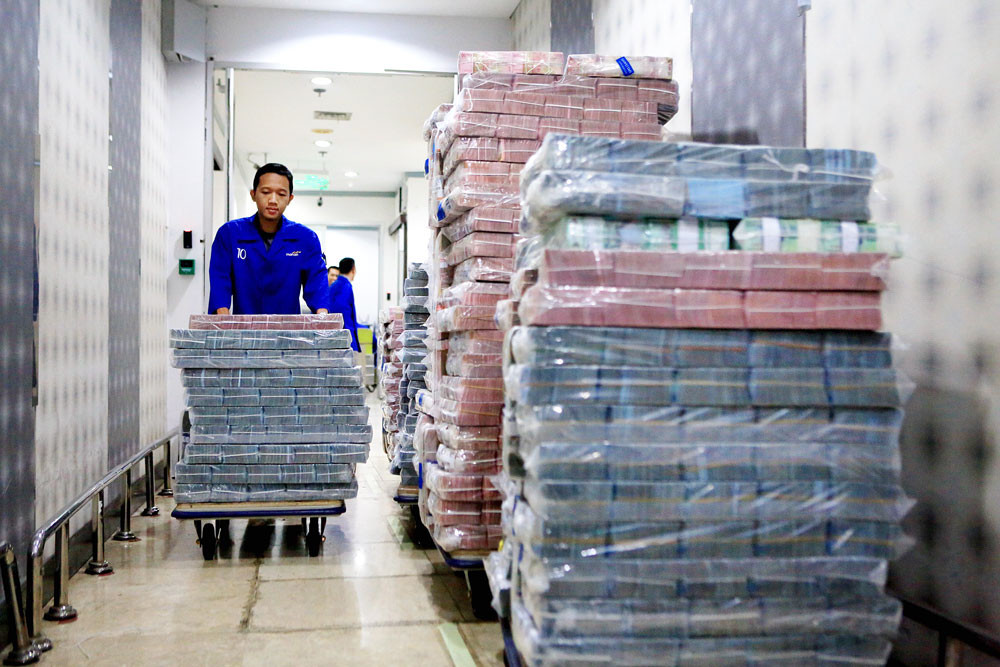Popular Reads
Top Results
Can't find what you're looking for?
View all search resultsPopular Reads
Top Results
Can't find what you're looking for?
View all search resultsSlowing loan growth halves Bank Mandiri’s profit growth in 2019
The publicly listed bank's net profit grew 9.86 percent year-on-year (yoy) to Rp 27.5 trillion (US$2 billion) in 2019.
Change text size
Gift Premium Articles
to Anyone
S
tate-owned Bank Mandiri booked almost 10 percent profit growth in 2019, although the figure was lower than in 2018 due to slowing loan growth.
The publicly listed bank's net profit grew 9.86 percent year-on-year (yoy) to Rp 27.5 trillion (US$2 billion) in 2019. Despite the strong growth, the figure was far lower than the 21.2 percent year-on-year (yoy) expansion recorded the year prior.
"The growth in profit was driven by a double-digit growth in loan disbursement and a lower bad credit ratio," Bank Mandiri president director Royke Tumilaar told a press briefing in Jakarta on Friday.
He said the bank disbursed a total of Rp 907.5 trillion in loans last year, up 10.65 percent yoy compared to 12.4 percent growth booked in 2018.
“The growth was almost equal in every credit segment,” he said.
The stocks of Bank Mandiri, traded on the Indonesia Stock Exchange (IDX) with the code BMRI, jumped 1.93 percent to Rp 7,925 on Friday versus a slight decrease of 0.1 percent recorded by the main gauge, the Jakarta Composite Index.
Despite the slower loan growth, Bank Mandiri recorded higher credit disbursement expansion compared to other state-owned banks that had announced their financial reports as of Friday, namely Bank Negara Indonesia (BNI) and Bank Rakyat Indonesia (BRI). BRI and BNI could only record single-digit growth in loan disbursement.
Royke further explained that the slump in loan growth was caused by last April’s general election and lower commodity prices that forced businesses to hold back their expansion plans in 2019.
The corporate-focused bank also managed to reduce its non-performing loan (NPL) ratio to 2.33 percent in 2019. Risk management director Ahmad Siddik Badruddin said the figure was the lowest the lender had recorded since 2016.
“[The lower NPL ratio] was a result of our efforts to improve our risk management and human resources over the past three years,” he said.










